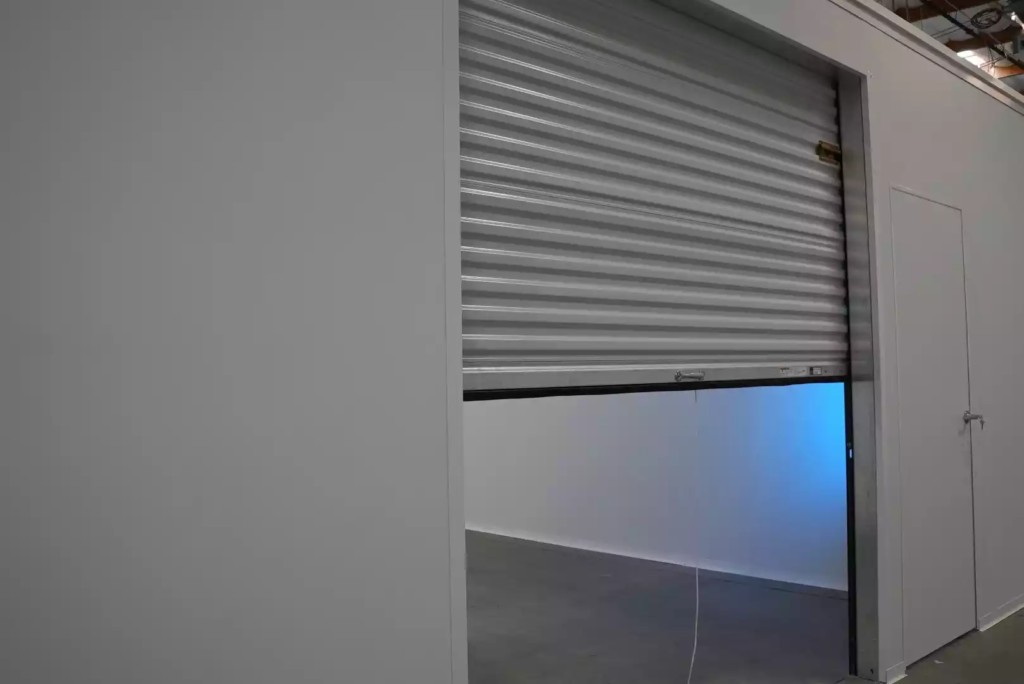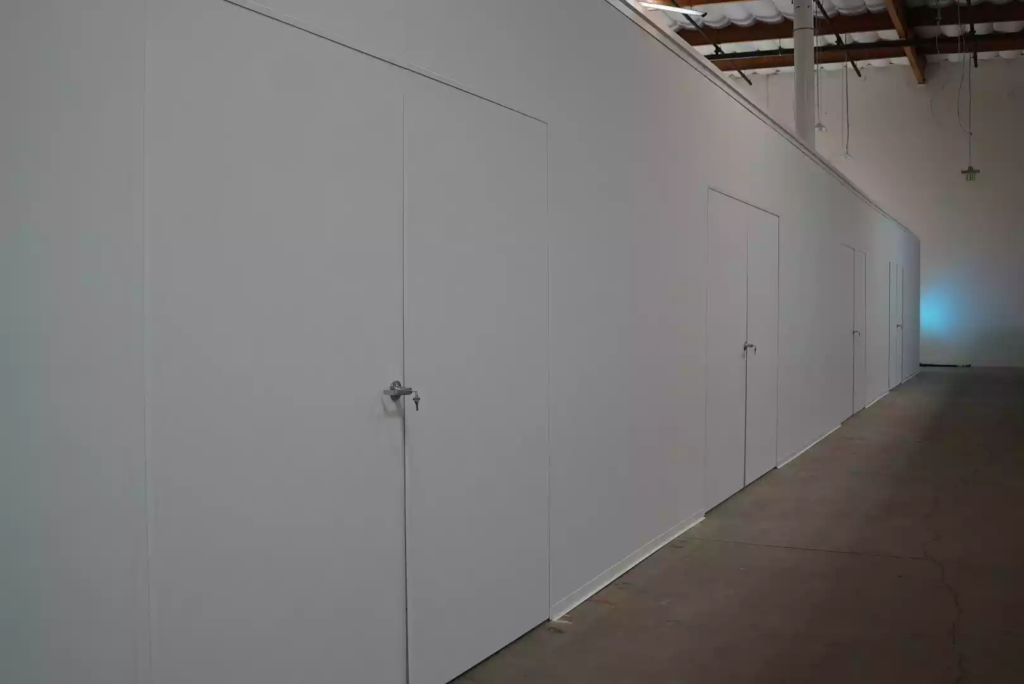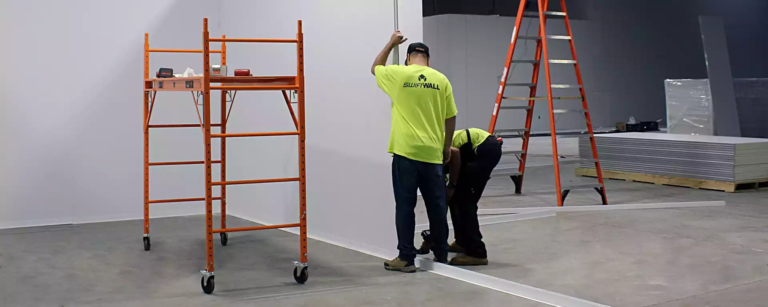In the age of vast shipping and logistics businesses, the warehouse has never been more important. Thankfully for both construction firms and the companies who own the buildings, modern warehouse construction techniques and materials allow for the buildings to go up very quickly. Once erected, however, more traditional building techniques and materials are employed to construct the interior spaces.
In this article, we take a look at a way to solve interior construction rapidly—from months to weeks or even days—as well as employing modularity with the use of temporary walls as warehouse divider walls.
Understanding the Modern Warehouse
For many, a warehouse is simply a large structure with a massive open footprint to store and distribute products and goods. In reality, while still performing the same function, the interior of warehouses can vary dramatically depending on the need. Some contain offices, others are split internally by multiple businesses (co-warehousing), and all are increasingly governed by high-tech logistics operations looking to optimize the floor plan for an optimized workflow.
To achieve unique interior layouts requested by the owner, traditional construction methods are typically employed. This includes the construction of warehouse divider walls using drywall and studs, plastic, pipe and drape, or plywood. Although effective, these techniques have several drawbacks that cost time, money, and will limit modularity.
Drawbacks to Using Traditional Construction Methods for Warehouse Interior Design
Excessive Waste
Constructing interiors is not as simple as taking studs and drywall off the truck and fitting them together like legos. Studs and drywall need to be cut appropriately for the designed walls or offices, which creates monetary waste in both material and labor.
Ineffective Separation
Traditional walls and temporary walls made of studs and drywall are effective at base-line separation, but depending on the products and differing businesses contained within a warehouse, physical separation alone may be inadequate. Acoustic and sterile separation are two examples where typical studs and drywall are ineffective and would, therefore, need additional materials. This adds to material and labor costs and lengthens project timelines.
Lengthy Build and Clean-up Times
Measuring, cutting, and constructing traditional temporary walls then performing clean-up, both of excess materials and construction dust, is labor and time-intensive, and can delay operations
Dirt and Dust Build-up
Whenever materials need to be custom cut and fit, there will inevitably be dust and dirt in the assembly area. This will need to be removed and the area cleaned at additional labor costs and time expenditures.
Operational Disruptions
In discussing warehouse renovations, limiting operational disruptions is paramount (but challenging to do) when needing to construct new walls and barriers out of traditional materials.
Impractical Scalability
Traditional wall construction methods are not temporary, even if they need to be. If operations needs an initial warehouse configuration to be altered – whether for a new tenant/ownership or to better optimize workflow due to any number of changing variables – traditional stud and drywall must be ripped out and replaced.
Avoid Cost, Time and Waste Overruns with Prefabricated and Modular Temporary Walls from SwiftWall®

The solution to the above is rather simple: prefabricated and modular temporary walls. Instead of relying upon inefficient solutions involving traditional materials and the associated labor costs and waste, SwiftWall® temporary prefab modular wall systems can be deployed to meet any need rapidly. Let’s take a look at their benefits:
Reduction in Material and Labor Costs
SwiftWall® temporary modular walls eliminate the need for traditional construction with studs and drywall. This means limited construction dust, debris, and waste, and severely reduced labor requirements for installation.
Maximize Utilization
As mentioned, no two warehouses are alike inside. SwiftWall® temporary modular walls install 5x faster and can be used for a variety of reasons in a warehouse. They can be used as warehouse room dividers to separate materials, products, and work spaces, and they can also be used to create a large independent workspace for warehouse managers. Whatever the need is for dividing space, Swiftwall® temporary walls can help.
Leverage Co-Warehousing
Smaller operations seek co-warehousing solutions, and warehouse owners can make use of unused space for additional revenues. SwiftWall® temporary walls can be rapidly installed and configured to bring a new tenant online quickly.
Protect Assets
Warehouses can be messy, and the constant shuffling of product in and out through dock doors inevitably leads to dust and dirt. This can negatively impact both equipment and product. SwiftWall® temporary warehouse walls integrate with features like rolling service doors to keep these types of contaminants from your machinery and goods. The walls also withstand exposure to the elements better than other traditional construction materials.
Reduce Ecological Impact
By utilizing SwiftWall® temporary warehouse dividers and walls, waste from common construction materials is eliminated. Every 70 feet of drywall-and-stud construction for temporary walls creates up to 1 ton of landfill waste. Not only do SwiftWall® systems avoid this waste, but they are up to 95% recyclable at the end of their lifespans.
SwiftWall® Modular Walls: Your Ideal Space Management Solution

Constructing a warehouse is only half the battle; optimized, reconfigurable interiors is where businesses save time and money and invest in themselves properly.
Reach out to our team of experts today to discover how SwiftWall® temporary wall systems can help you create warehouse divider walls to make your space the most effective and efficient it can be.


